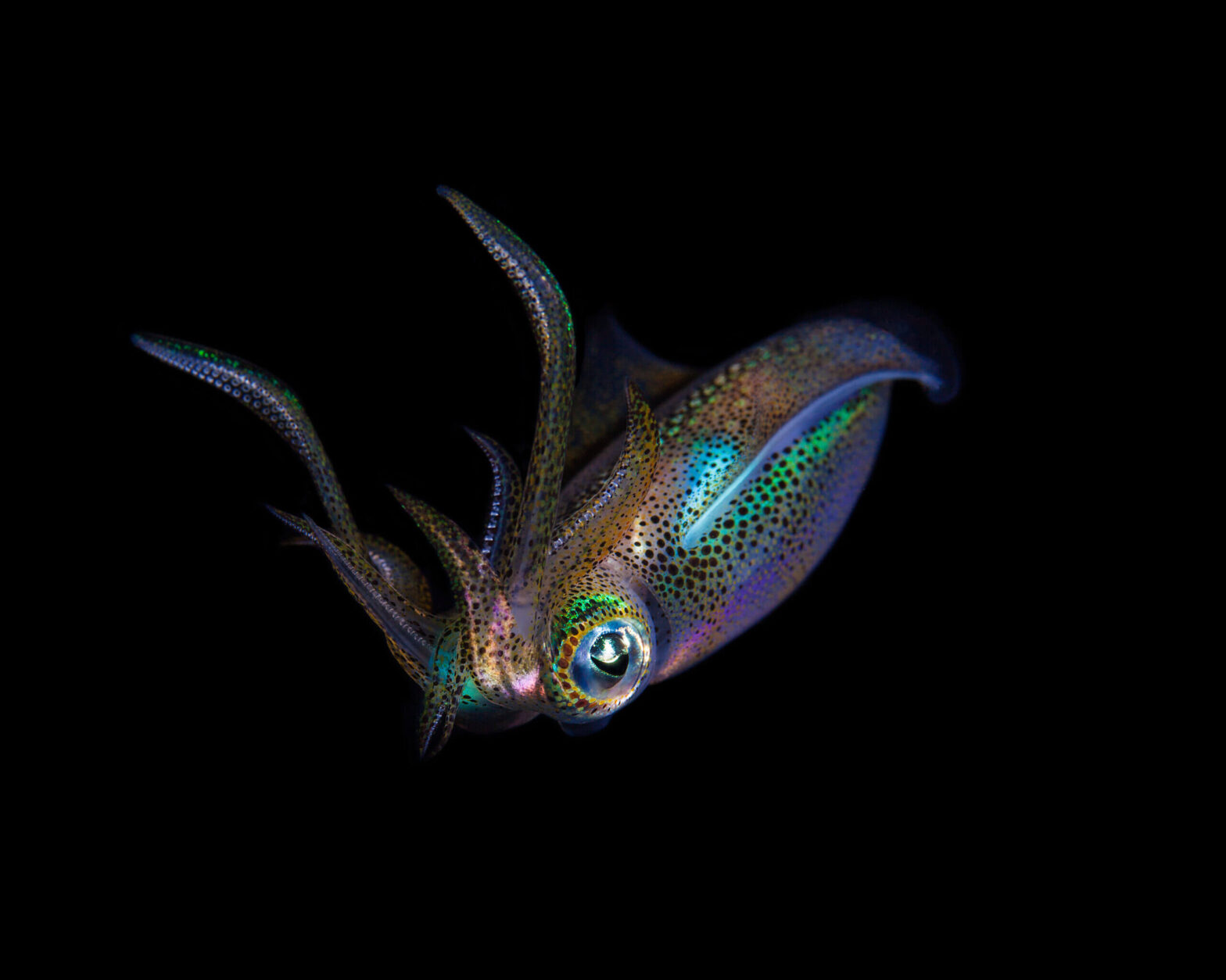Deep-sea species: Biodiversity under extreme conditions
The deep-sea is virtually inaccessible to humans and therefore largely unexplored. We even know more about the surface of the moon than about life in the dark expanses of the oceans. Pictures of deep-sea inhabitants provide us a glimpse of a fascinating world.
For a long time, humans imagined the deep-sea to be a wasteland because of the extreme pressure, the cold and the prevailing darkness. It was not until the 19th century that soil samples were lifted from a depth of 4,000 metres and found to be full of organisms. When Jacques Piccard found a flatfish in the Mariana Trench in 1960, it was clear: the deep sea is alive.
It is the largest biosphere on our planet and seems to harbour an immeasurable number of species, few of which are known to us. With increasing ocean depth, the number of animals decreases, but the diversity of species is enormous. Around 27,000 species have been identified so far, but there are most probably thousands, if not millions more. Creatures that have made these depths their home include fish, corals, jellyfish, octopuses, worms, sponges, clams and crabs.
How the creatures of the darkness have adapted to the extreme living conditions of the deep sea often appears to be spectacular. Deep-sea dwellers can be microscopically small, but also very large. The giant squid, for example, can grow up to 13 metres long. Researchers have succeeded in making fascinating video recordings of these giants. Dead giant squid have been found in fishing nets, on beaches and in the stomachs of sperm whales.
Water column: generating counter pressure
The pressure doubles just ten metres below the surface of the sea. At a depth of 10,000 metres, up to a tonne of weight rests on every square centimetre of a living creature.
To prevent animals from being crushed, their bodies have taken on a gel-like consistency. They have very few bones and muscles and practically no hollow cavities. An increased internal pressure ensures body stability. If you bring such animals to the surface of the water, they melt or can burst.
Eclipse: Bringing light into the darkness
Light rapidly diminishes under water at depths of 300 metres and more. At 1,000 metres, it is pitch black in the sea. Some deep-sea dwellers carry their own light with them, which is produced in luminescent organs by bacteria. This is how they attract prey and mates and communicate with members of their own species. The deep-sea anglerfish, for example, carries a light spot in front of it like a fishing rod. When its prey approaches, it only has to snap at it.
Some animals also help themselves in the darkness by looking through their particularly large eyes in order to take advantage of the weak residual light. The glass-head fish even has a transparent head in which its eyes are located.
Food: Many good things come from above
Neither algae nor phytoplankton will grow without light and photosynthesis. The food supply in the deep-sea is correspondingly meagre. Some animals depend on organic material that trickles down to them from higher water layers: so-called marine snow from dead plants and dead animals. Most of the nutrients, however, have already been eaten by other marine inhabitants living above them at higher levels. Only a little of it reaches the ocean floor. Rare feasts for them are large animals like whales, which sink to the bottom after they die.
There are also deep-sea dwellers – such as bacteria and single-celled organisms – that have developed hydrothermal vents as food sources: They live on the chemicals that flow from the earth´s interior into the deep sea through hot underwater vents.
Some species also migrate vertically in search of food: At night they emerge to feed in food-rich water layers, and at dawn they retreat to the depths where they are safer from predators. The lantern fish, for example, migrates for three hours from a depth of 1,700 metres to 100 metres below sea level. This type of foraging has the advantage that nutrients also return to the depths with the animals.
Whoever depends on food at the bottom of the sea must be able to conserve a maximum of energy and endure long periods of fasting. Many of these animals therefore lie motionless in wait for their prey instead of actively hunting it. And so that not a single morsel escapes, the mouths of some species are equipped with huge teeth. This, as in the case of the viper fish, gives them a sinister appearance.
Partner search: Everlasting love
Finding a partner in the sparsely populated depths of the ocean is like a lottery. It takes luck and good chemoreceptors to meet in the immeasurable expanse. The adult male of the deep-sea anglerfish has found a radical answer to this: If he finds a female, he bites down on her and then becomes fused with her.
